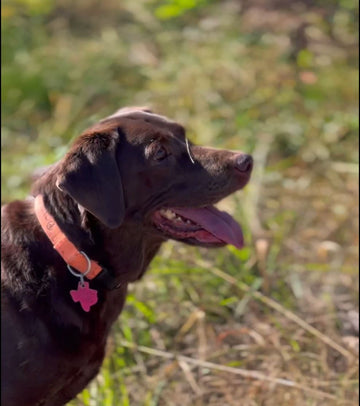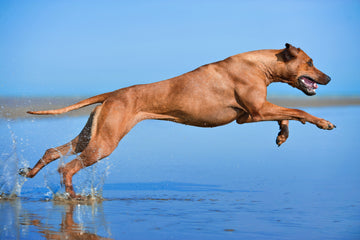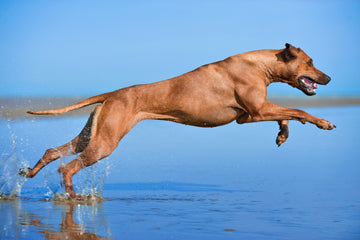Many people only think that mobility issues happen to old dogs or those who are injured, but the truth is that mobility can be affected by small problems. Minor changes in your dog’s behavior or body can be the first signs of trouble, so detecting them early on can help your pet stay healthy and happy for a long time.
This is what you should look for and the steps to take to prevent minor problems from becoming big problems.
1. Moving the Head and Body at a Slower Pace
Pausing before jumping, hesitating at stairs, and taking more time to get up from lying down could indicate that your pet is already experiencing joint or muscle discomfort, besides just aging. Most of the time, dogs try to hide their pain, so slight changes in their movements are often the first thing you notice.
2. Dragging one’s foot or moving weight to another side
Do you see your dog walking with one leg more than the others? Sometimes, even slight limping or weight shifting from one paw to another can suggest that the tendons, ligaments, or soft tissue is strained. Although these symptoms may disappear for a while, they still require attention since they might indicate problems with the cruciate ligament, hip pain, or inflammation.
3. Participating less in normal activities
Is your dog usually resting instead of chasing a ball or welcoming people at the door? When a dog avoids playing or going for walks, it may be because of pain caused by joint inflammation or muscle or ligament injury. If your pet is not as interested as usual, you should check things out.
4. Alterations in the way a person walks or stands
Pay attention to the way your dog gets around. If your pet’s back legs wobble, they stand with wider paws, or their back is hunched, these signs may show that something is wrong with their legs, hips, or spine. Many people don’t notice these changes until the condition gets worse, so you should notice them right away.
5. Trying to Lick or Chew at Joints
Frequent licking of certain body parts may point to your dog’s discomfort or internal trouble. If your dog keeps chewing or licking the same places, you should visit the vet and look into helpful treatments.
Why choosing Early Action is important
If you treat your dog early, they are likely to have less damage in the future and keep moving well as they age. Helping the joints and also the nearby muscles, tendons, and ligaments increases the chances your dog will stay active and free from discomfort.
This is why Forte Flex K9 was made as a total leg-health formula, not only a supplement for joints. Because of its special ingredients like glucosamine, collagen type II, and Arto Velox™ enzymes, Forte Flex K9 works to reduce inflammation, maintain healthy tissue, and help your dog recover before any major problems show up.
When you are not sure, act fast.
Should you detect these small signs, act quickly before the issue worsens to lameness. If you give your dog daily supplements, encourage exercise, supervise their weight, and take them to the vet often, they can enjoy mobility for many years.
When your dog has good mobility, they enjoy a better life. That’s the main reason why we exist.





